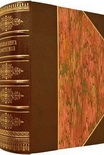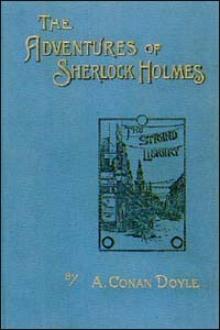My Autobiography, Charles Chaplin [books to read in your 20s .TXT] 📗

- Author: Charles Chaplin
Book online «My Autobiography, Charles Chaplin [books to read in your 20s .TXT] 📗». Author Charles Chaplin
The red-light district of Butte, Montana, consisted of a long street and several by-streets containing a hundred cribs in which young girls were installed ranging in age from sixteen up for one dollar. Butte boasted of having the prettiest women of any red-light district in the Middle West, and it was true. If one saw a pretty girl smartly dressed, one could rest assured she was from the red-light quarter doing her shopping. Off duty they looked neither right nor left and were most respectable. Years later I argued with Somerset Maugham about his Sadie Thompson character in the play Rain. Jeanne Eagels dressed her rather grotesquely, as I remember, with spring-side boots. I told him that no harlot in Butte, Montana, could make money if she dressed like that.
In 1910 Butte, Montana, was still a ‘Nick Carter’ town, with miners wearing top-boots and two-gallon hats and red neckerchiefs. I actually saw gun-play in the street, a fat old sheriff shooting at the heels of an escaped prisoner, who was eventually cornered in a blind alley without harm, fortunately.
My heart grew lighter as we travelled west: cities looked cleaner. Our route was Winnipeg, Tacoma, Seattle, Vancouver, Portland. In Winnipeg and Vancouver, audiences were essentially English and in spite of my pro-American leanings it was pleasant to play before them.
At last California! – a paradise of sunshine, orange groves, vineyards and palm-trees stretching along the Pacific coast for a thousand miles. San Francisco, the gateway to the Orient, was a city of good food and cheap prices; the first to introduce me to frogs legs à la provençale, strawberry shortcake and avocado pears. We arrived in 1910, after the city had risen from the earthquake of 1906, or the fire, as they prefer to call it. There were still one or two cracks in the hilly streets, but little remnant of damage was left. Everything was new and bright, including my small hotel.
We played at the Empress, owned by Sid Grauman and his father, friendly, gregarious people. It was the first time I was featured alone on a poster with no mention of Karno. And the audience, what a delight! In spite of The Wow-wows being a dull show, there were packed houses every performance and screams of laughter. Grauman said enthusiastically: ‘Any time you’re through with the Karno outfit, come back here and we’ll put on shows together.’ This enthusiasm was new to me. In San Francisco one felt the spirit of optimism and enterprise.
Los Angeles, on the other hand, was an ugly city, hot and oppressive, and the people looked sallow and anaemic. It was a much warmer climate but had not the freshness of San Francisco; nature has endowed the north of California with resources that will endure and flourish when Hollywood has disappeared into the prehistoric tar-pits of Wilshire Boulevard.
We finished our first tour in Salt Lake City, the home of the Mormons, which made me think of Moses leading the children of Israel. It is a gaping wide city, that seems to waver in the heat of the sun like a mirage, with wide streets that only a people who had traversed vast plains would conceive. Like the Mormons, the city is aloof austere – and so was the audience.
After playing The Wow-wows on the Sullivan and Considine circuit, we came back to New York with the intention of returning directly to England, but Mr William Morris, who was fighting the other vaudeville trusts, gave us six weeks to play our whole repertoire at his theatre on Forty-second Street, New York City. We opened with A Night in an English Music Hall, which was a tremendous success.
During the week a young man and his friend had a late date with a couple of girls, so to kill time they wandered into William Morris’s American Music Hall, where they happened to see our show. One remarked: ‘If ever I become a big shot, there’s a guy I’ll sign up.’ He was referring to my performance as the drunk in A Night in an English Music Hall. At the time he was working for D. W. Griffith as a movie extra in the Biograph Company, getting five dollars a day. He was Mack Sennett, who later formed the Keystone Film Company.
Having played a very successful six weeks’ engagement for William Morris in New York, we were again booked for another twenty weeks’ tour on the Sullivan and Considine circuit.
I felt sad as we drew near to the end of our second tour. There were three weeks more, San Francisco, San Diego, then Salt Lake City and back to England.
The day before leaving San Francisco, I took a stroll down Market Street and came upon a small shop with a curtained window and a sign reading: ‘Your fortune told by hands and cards – one dollar.’ I went in, slightly embarrassed, and was confronted by a plump woman of about forty who came from an inner room still chewing an interrupted meal. Perfunctorily she pointed to a small table against the wall facing the door, and without looking at me said: ‘Sit down, please,’ then she sat opposite. Her manner was abrupt. ‘Shuffle these cards and cut them three times towards me, then lay the palms of your hands upwards on the table, please.’ She turned the cards over and spread them, studied them, then looked at my hands. ‘You’re thinking about a long journey, which means you’ll be leaving the States. But you return again shortly, and will enter a new business – something different from what you’re doing at present.’ Here she hesitated and became confused. ‘Well, it’s almost the same but it’s different. I see tremendous success





Comments (0)